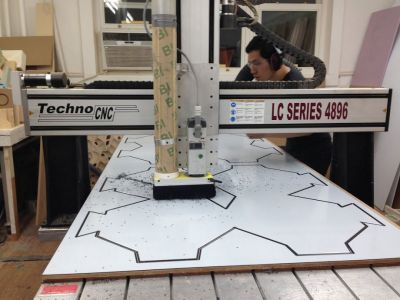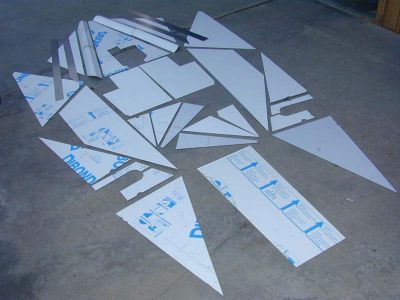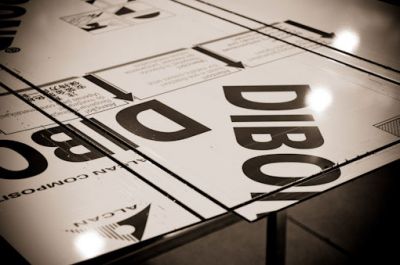 Dibond Material can be cut using various methods common to both the metal and woodworking industries. These methods include cutting with table saws, panel saws, multiple operation rip/V-grooving saws, portable saws, reciprocating and band saws, and routing and shearing equipment. No cutting lubricants, oils or coolants are required with any of these cutting operations.
Dibond Material can be cut using various methods common to both the metal and woodworking industries. These methods include cutting with table saws, panel saws, multiple operation rip/V-grooving saws, portable saws, reciprocating and band saws, and routing and shearing equipment. No cutting lubricants, oils or coolants are required with any of these cutting operations.
Sawing
Dibond Material is manufactured with a Polyester paint finish. Care should be taken to protect the finish during any sawing operation. In some cases it is best to move the saw blade rather than the Dibond Material when sizing the panels.
Table Saws are not recommended for cutting sheets larger than 4’ x 4’ in size. Blades should be Carbide tipped or High Speed Steel designed for cutting nonferrous materials, ground thinner from the rim towards the center to prevent pinching. The blades should have angled or circular teeth, alternate beveled, triple ground with the tooth gap wall rounded. The chip angle should be 5 to 15 degrees with a clearance angle of 10 to 30 degrees and a tooth spacing of 3/16” to 1”. Cutting speeds of 5,500 RPM and feeds of 16”/second are possible.
Panel Saws provide an effective method of cutting Dibond Material. These saws, whether standard equipment or custom made, perform well and have the added advantage of space savings. Blades should be the same type used for table saws.
Multiple Operation rip/V-grooving Saws are used for high volume production operations. This equipment is capable of performing more than one operation with a single pass such as cutting and V-groove routing at the same time. Blades should be the same type used for Table Saws.
 Portable Saws (circular) are also used effectively to cut Dibond. These saws should be production/industrial type equipment. Blades should be the same type used for table saws.
Portable Saws (circular) are also used effectively to cut Dibond. These saws should be production/industrial type equipment. Blades should be the same type used for table saws.
Reciprocating Saws work well for cutouts. Care should be taken with portable and reciprocating saws to prevent damage to the Dibond Material surface. More than one sheet can be cut at a time by stacking panels. If center cutting (i.e. Letter cutouts) is required, a foam pad may be placed under the Dibond Material with the reciprocating blade cutting into the foam. The sheets may be clamped or secured with double-faced tape for the cutting operation. When clamping between jaws, protect the panel surface against damage. Blades should be high speed steel, 03” to .047” thick, 3/16” to 9/16” wide, with hook or circular teeth with alternate angles, set or waved at a spacing of .010” to .250”. Cutting feeds up to 4”/second are possible.
Band Saws may be used to cut irregular shapes or curves. Blades should be tempered spring strip steel, .03” to .047” thick, 9/16” to 1” wide, with skip teeth designed for nonferrous and ferrous materials spaced at a mimimum of 10 teeth per inch. Cutting speeds of 10,000 FPM at a cutting feed of 10”/second are possible.
Dibond Material can be cut to size using either portable commercial or automated routing equipment. Bits should be carbide tipped and kept sharp. Single or multiple flutes may be used.
Shearing
Dibond Material can be easily sheared. However, a slight roll-down of the aluminum cover sheet may occur on the impact side. This “roll-down” area is often referred to as the “edge zone”. In this area, the polyethylene core is compressed and can lead to increased stress between the core and the aluminum cover sheet.
Due to this additional stress, shearing should be avoided when the edge of the panel is exposed to the environment.
When shearing Dibond Material, light markings on the material may be caused by the hold down pads. In order to avoid these markings, the hold down on the shear should be fitted with a shock-absorbing rubber pad to prevent damage to the Dibond Material.


